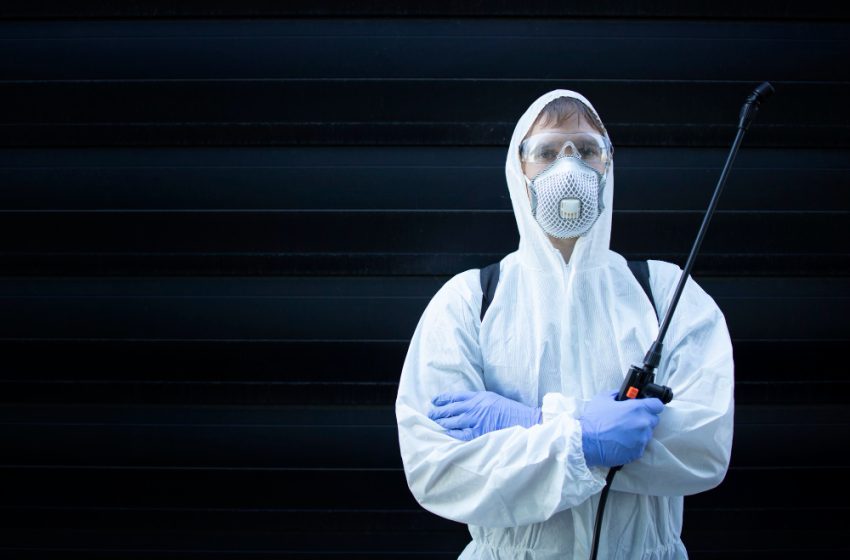The Dangers of DIY Pest Control: When to Call a Professional

When it comes to pest control, many homeowners may be tempted to tackle the problem themselves. With an array of DIY solutions available—whether it’s over-the-counter sprays, traps, or natural remedies—it seems easy enough to handle a pest infestation on your own. However, there are significant risks and potential downsides to DIY pest control. Understanding these dangers and knowing when to call in a professional can save you time, money, and potentially serious health risks.
1. Misidentifying the Pest Problem
One of the biggest challenges with DIY pest control is correctly identifying the pest you’re dealing with. Without the expertise to distinguish between species, you may end up treating the wrong problem or using ineffective methods.
-
Common Missteps:
- Confusing ants for termites or treating one pest as if it were another.
- Mistaking a mild issue for a full-blown infestation.
- Using treatments that don’t address the root cause of the infestation.
-
Why It’s Risky:
Misidentification can lead to wasted time, ineffective treatments, and the potential for the pest issue to worsen over time. For example, treating termites with an ant solution can cause the termites to spread, doing even more damage to your home.
2. Inadequate or Improper Use of Pesticides
DIY pest control often involves using chemical products, many of which are powerful and potentially hazardous if not used correctly. Without proper knowledge of how to apply these pesticides, you risk exposure to harmful chemicals that can affect your health and the environment.
-
What Can Go Wrong:
- Using the wrong concentration of pesticide.
- Applying chemicals in areas where they’re not meant to be used.
- Improper storage of toxic substances, leading to accidents.
- Contamination of food, water, or pet areas.
-
Why It’s Risky:
Incorrect application of pesticides can cause poisoning, burns, respiratory issues, or allergic reactions. In the worst-case scenario, improper pesticide use can be fatal to humans and pets. Professional pest control services have the necessary training and equipment to apply pesticides safely and effectively.
3. Health and Safety Hazards
Many pests, including rodents, cockroaches, and mosquitoes, can carry harmful diseases or trigger allergic reactions. When trying to deal with an infestation on your own, you might expose yourself and your family to serious health risks.
-
Common Health Risks:
- Rodents: Can transmit diseases like Hantavirus, leptospirosis, and salmonella.
- Cockroaches: Can exacerbate asthma and cause allergies.
- Mosquitoes: Can transmit diseases like West Nile virus and Zika.
-
Why It’s Risky:
Attempting to remove these pests without proper protection or experience increases your chances of exposure. Handling rodents or insects improperly, such as touching them directly or disturbing nests, can put you at risk for bites, stings, or contact with harmful bacteria.
4. Ineffective Pest Control Solutions
DIY pest control methods, while readily available, are often ineffective against large or persistent infestations. Many over-the-counter treatments only address surface problems, leaving the underlying issue unresolved.
-
Common Pitfalls:
- Relying on traps or sprays that only kill visible pests without targeting nests or breeding sites.
- Using natural remedies that may not be strong enough for certain types of infestations.
- Wasting time on ineffective products, leading to the pest problem worsening.
-
Why It’s Risky:
Without proper knowledge of the pest’s lifecycle, nesting behavior, and best treatment methods, DIY solutions often fail to eradicate the infestation. This can lead to more damage to your property or more serious health risks in the long run.
5. Overlooking the Source of the Infestation
A key factor in controlling pests is addressing the source of the problem. DIY solutions may focus on killing visible pests but fail to eliminate the root cause, such as nests, breeding grounds, or cracks in your home that allow pests to enter.
-
What Often Happens:
- Missing hidden entry points, like cracks in walls or vents.
- Failing to address the environment where pests breed (e.g., clogged gutters, damp areas, or piles of wood).
- Not sealing entryways effectively, leaving pests an open invitation to return.
-
Why It’s Risky:
Pests can return quickly if the source of the infestation isn’t addressed, leading to a recurring problem. Professional pest control experts can perform thorough inspections to find and eliminate all entry points and breeding areas.
6. Risk to Family, Pets, and the Environment
Many DIY pest control solutions, especially pesticides, can be hazardous to your family and pets. Pets are often curious and may ingest or come into contact with chemicals or poisons meant for pests. Furthermore, some DIY treatments can harm the environment, such as when toxic chemicals seep into the soil or water supply.
-
What Can Go Wrong:
- Pets ingesting poisoned bait or coming into contact with toxic sprays.
- Children being exposed to hazardous chemicals.
- Harm to beneficial insects (like bees) or local wildlife.
-
Why It’s Risky:
Without professional knowledge of safety protocols, applying DIY pest control products can have unintended consequences for the health of your family, pets, and the ecosystem. A professional pest control technician will use safer, more targeted products designed to minimize risk to humans, pets, and the environment.
7. Long-Term Damage to Your Property
Certain pests, such as termites, carpenter ants, and rodents, can cause significant damage to your home. While DIY treatments may seem like a quick fix, they might not fully resolve the infestation, leading to extensive damage that could cost thousands of dollars to repair.
-
What Can Go Wrong:
- Termites silently destroying the structural integrity of your home.
- Rodents chewing through wires, insulation, and wood beams.
- Pests causing cosmetic damage to furniture, walls, and flooring.
-
Why It’s Risky:
Neglecting to completely eliminate pests can result in worsening damage over time. A professional pest control expert can identify and treat the problem at its source, preventing expensive repairs in the future.
When to Call a Professional
While DIY pest control can be effective for minor problems, there are clear signs when it’s time to call in a professional:
- Large or Persistent Infestations: If you’ve noticed repeated problems or if the infestation is widespread.
- Health Risks: If the pests in your home pose a health risk or if you’re allergic to bites, stings, or droppings.
- Structural Damage: If you suspect pests are damaging the structure of your home, such as with termites or rodents.
- Failed DIY Methods: If your efforts haven’t been successful after several attempts, or if the infestation seems to be getting worse.
Final Thoughts
While DIY pest control may seem like a convenient and cost-effective solution, it carries risks that can be harmful to your health, property, and the environment. When in doubt, it’s always best to call a professional pest control service. Experts have the tools, knowledge, and experience to address your pest problems safely, effectively, and efficiently, providing long-term solutions that DIY methods simply can’t match. Don’t take chances—protect your home and family by leaving pest control to the professionals.

